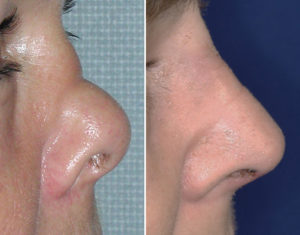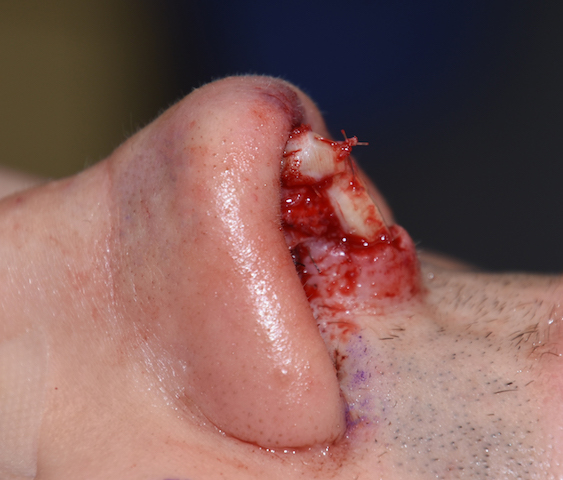Rhinoplasty, like every other facial reshaping surgery, poses challenges in achieving exactly the result the patient desires. Thus it is no surprise that the revision rates in rhinoplasty are not low. A result can look just fine early after surgery to eventually progress to irregularities and asymmetries as full healing and scar contracture exert their effects.

To avoid any efforts at harvesting cartilage grafts or the uncertainty of whether enough graft exists, the use of allogeneic or tissue bank cartilage is an option. Historically, such cartilage grafts were sterilized by irradiated but were complicated by resorption and higher infection rates. More recently non irradiated allogeneic cartilage grafts have become available through a fresh frozen sterilization process. The cartilage source is rib of various physical characteristics.
In the September 2019 issue of the journal Plastic and Reconstructive Surgery an article on this topic was published entitled ‘Fresh Frozen Allograft in Rhinoplasty’. In this paper the authors report their experience with fifty (50) patients who underwent revisional rhinoplasty over a three year period. Outcomes were assessed by blinded review of pre and postoperative photographs using an Independent Rhinoplasty Outcome Score. Fresh frozen rib grafts were used as dorsal onlays, spreader grafts, columellar struts and various forms of tip grafting.
Patients were followed for an average of just over three months. One infection occurred (2%) and no warping or extrusions occurred.
The concept of fresh frozen rib grafts for rhinoplasty is certainly an improved method of graft preparation over irradiation. While the followup is short term it is probably adequate to assess the infectivity risk which is comparable to autogenous grafting at this low number. Since the costal rib segments are harvested from the 7th to 9th ribs, they are not perfectly straight as no human rib is in this location. The only way to really assess the risk of warping, which is also an issue with autogenous rib grafts, is longer term followup in applications where larger grafts are used (dorsal onlays) in a more isolated manner in a subcutaneous pocket.
Dr. Barry Eppley
Indianapolis, Indiana



